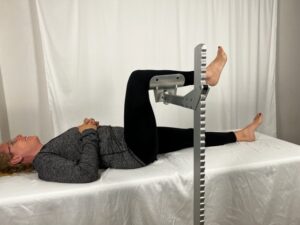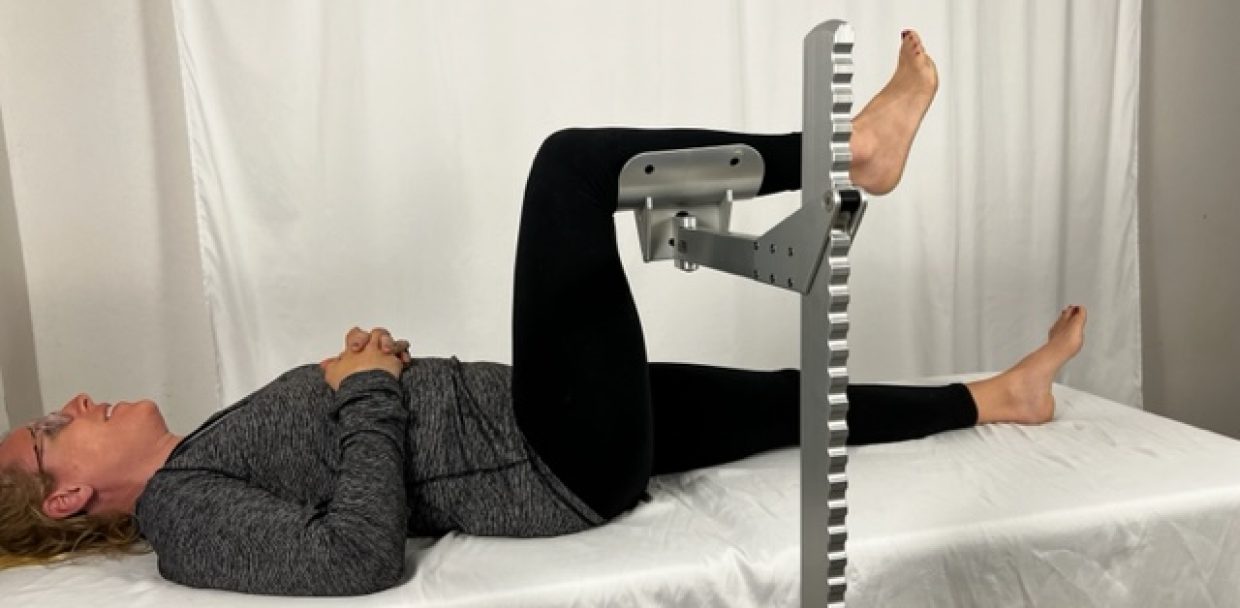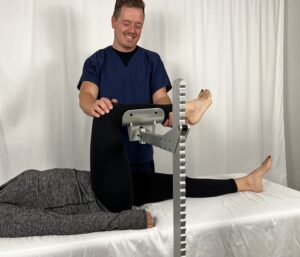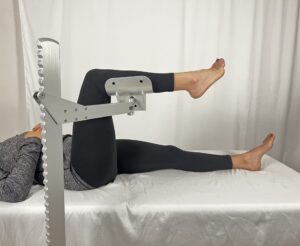In this post I am going to share why we have created the Leg Lift in the form of a product comparison.
Over the past several years of working in an acute care hospital, I’ve continually hit a barrier to efficient hip exams. Patients who show up to the hospital for hip x-rays are in too much pain to hold positioning for their “first look” x-ray exam, and they are altered by anesthesia and unable to participate during their post-op x-rays. There are two or three positioning tools available on the market, and today I’m going to show you one of those, demonstrate its abilities and shortcomings, and share how I’ve overcome those issues in the design of the Leg Lift.
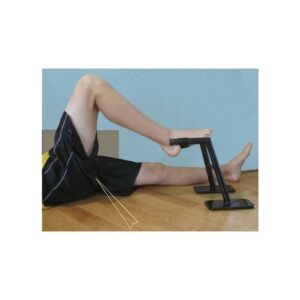
This is the Anchor Model 700. It has been available for years at the hospital I work at, and I’ve tried to incorporate it into my exams many times. The set up is simple. The Anchor is positioned next to the patients knee, the unaffected leg is lifted and the patients foot is rested into the stirrup. I have not found the Anchor to be effective because it only provides partial support. The patient still has to participate in their own positioning. If the patient fully relaxes their leg it will fall to the side. If the patient extends their leg, it will topple the Anchor. This poses a risk for skin tears, bruising, and further dislocation of a fracture. Because of this, the Anchor is best suited for settings where patients can still participate in their own positioning, such as an outpatient clinic.
In the hospital setting, patients are higher acuity and I have needed a positioning device that fully and actively supports the leg. I have taken these design requirements and integrated them into the design of the Leg Lift. The Leg Lift is floor mounted and sturdy so a patient can’t kick it over. The cradle supports the patients leg securely so they can fully relax during their imaging exam.
The Leg Lift is the ideal positioning device for hospitals and clinics where sturdy, reliable support is essential.
Explore our website for a demonstration video, additional applications, and ordering information.
